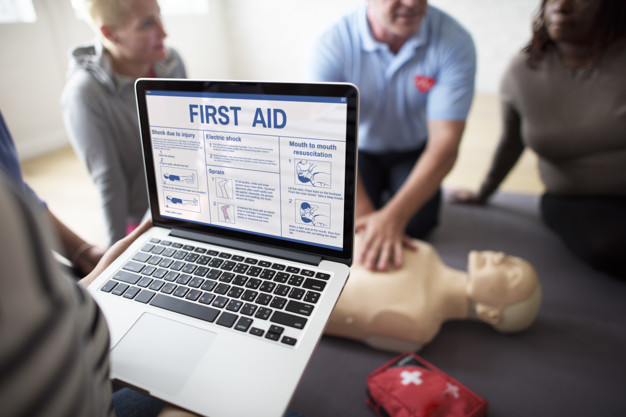In Canada, nearly 40,000 cardiac arrests and 62,000 strokes take place every year. The majority of these incidents take place at home or in public places. CPR is a lifesaving procedure that doubles the survival rate if administered immediately.
Unfortunately, many people are unaware of how to properly perform CPR, which means that the current survival rate is quite low.
In this blog, we’ll go over all the basics of CPR right here.
What does CPR do?
During cardiac arrest, a person’s heart stops beating, and this stops blood circulation. When blood circulation stops, vital organs in the body, such as the brain, kidneys, and heart stop getting oxygenated blood and are at risk of failure.
A major component of any first aid course is cardiopulmonary resuscitation (CPR). It is an emergency procedure that uses chest compressions and artificial ventilation to ensure continuous blood flow to the body.
If administered correctly, CPR can prevent organ failure and gives medical professionals the chance to operate on your heart successfully.
How to administer CPR?
According to Red Cross guidelines, these are the two components of CPR you should follow.
Push Hard and Fast
If you’re untrained but have some knowledge of CPR, it’s best to stick to a hands-only approach. Provide uninterrupted chest compressions of 100 to 120 per minute until the paramedics arrive.
When performing CPR, place one hand on top of the other and push hard and fast into the chest of the patient. Your compressions should be about two inches deep to be effective. With CPR, there is a risk of broken ribs as you push into the chest. However, it’s important to move past that as ribs can be repaired. Ensuring continuous blood flow through CPR should be the goal.
The process is quite physically taxing, and it’s best to have someone with you who can switch after every few minutes to prevent burnout. Make sure you get some to call the paramedics immediately so that the professionals can take over as soon as possible.
Deliver rescue breaths
If you have training in CPR, you can combine chest compressions with rescue breaths. Tilt the person’s head back slightly and open the mouth. Pinch their nose shut and blow hard into the mouth so you can see the chest rise. Deliver rescue breaths every few minutes and the continue chest compressions.
Having a basic understanding of CPR is a great first step, but nothing can substitute the effectiveness of hands-on training.
Metro Safety Training offers Red Cross basic life support training and first aid training courses to students all over BC. We combine classroom learning with practical training to reinforce concepts and improve your CPR skills.
For more information, call 604-521-4227.







